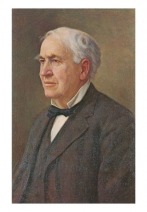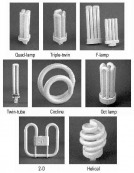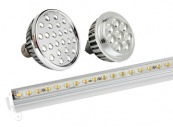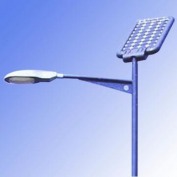The Next Generation of Illumination
When Thomas Edison marveled the world with his incandescent bulb, little did he know that his most prominent invention would one day be considered as a substantive contributor to global warming and the destruction of the environment. Within the next 5 years, this former symbol of a great idea will be outlawed all over the world.
The current heir apparent to the incandescent – the Compact Fluorescent Lamp (CFL) will also be under severe pressure because of its Mercury content, where millions of bulbs being disposed of simultaneously without proper containment, may cause harm to the ecological system.
The current heir apparent to the incandescent – the Compact Fluorescent Lamp (CFL) will also be under severe pressure because of its Mercury content, where millions of bulbs being disposed of simultaneously without proper containment, may cause harm to the ecological system.
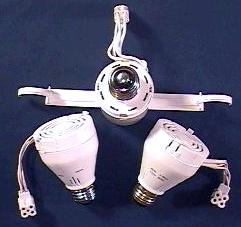
CFL Standard Ballasts
This development will require different types of electronic ballast designs and specifications for different types of lighting systems. Aligning with the right lighting system is the most critical decision for electronic ballast makers. The emergence of lighting as a critical input to ecological preservation has spawned new technologies and industries that would fuel economic growth.
The initiative to stem global warming through lighting systems change has morphed into an intricate merging of technological, economic, environmental and political momentum that will identify and define the critical forces that will determine the adoption of future generations of lighting technologies. The contest to replace the incandescent bulb will be won by the product creators who can evolve accessible technology with economic viability. CFLs currently enjoy an advantage, but the contest is by no means over nor decisively won.
LEDs pose the greatest challenge to CFLs, and it is improving in design, technological development and affordability. However, CFLs are also improving with 15,000 hour life spans for the 3rd generation models, and much lower Mercury content. The contest, however, should not be viewed from these two items only. High-Intensity Discharge (HID) systems, and even advanced linear fluorescent bulbs are adopting new technologies that should not be ignored, Ballasts that can provide dimming capabilities for both CFLs and linear Fluorescents can significantly improve efficiency. This would make it difficult for LEDs to gain the upper hand.
Control standards such as the Digital Addressable Lighting Interface (DALI) developed in Europe, enable the centralized control of all ballasts in an entire building. New generation ballasts are also being developed that enable electric utilities to remotely control household and industry fixtures; reducing the consumption load for their industrial and commercial customers during peak demand periods.
The initiative to stem global warming through lighting systems change has morphed into an intricate merging of technological, economic, environmental and political momentum that will identify and define the critical forces that will determine the adoption of future generations of lighting technologies. The contest to replace the incandescent bulb will be won by the product creators who can evolve accessible technology with economic viability. CFLs currently enjoy an advantage, but the contest is by no means over nor decisively won.
LEDs pose the greatest challenge to CFLs, and it is improving in design, technological development and affordability. However, CFLs are also improving with 15,000 hour life spans for the 3rd generation models, and much lower Mercury content. The contest, however, should not be viewed from these two items only. High-Intensity Discharge (HID) systems, and even advanced linear fluorescent bulbs are adopting new technologies that should not be ignored, Ballasts that can provide dimming capabilities for both CFLs and linear Fluorescents can significantly improve efficiency. This would make it difficult for LEDs to gain the upper hand.
Control standards such as the Digital Addressable Lighting Interface (DALI) developed in Europe, enable the centralized control of all ballasts in an entire building. New generation ballasts are also being developed that enable electric utilities to remotely control household and industry fixtures; reducing the consumption load for their industrial and commercial customers during peak demand periods.
The next 5 years will witness a phenomenon in lighting systems development that will benefit consumers, industrial and commercial users. An array of technologies, design concepts, colors, and capabilities; and the attendant fierce competition among makers and resellers, may sow confusion in the choices available to end users and buyers. These should not, however, deviate from the fundamental objective which these developments owe their presence to: the protection of the environment and the preservation of the planet’s ecological balance. The product that best integrates this objective will be the winner of the next generation of illumination for the future caretakers of this earth.
* Research information including images in this page were culled from internet resources and as such are copyrighted to their respective owners.


